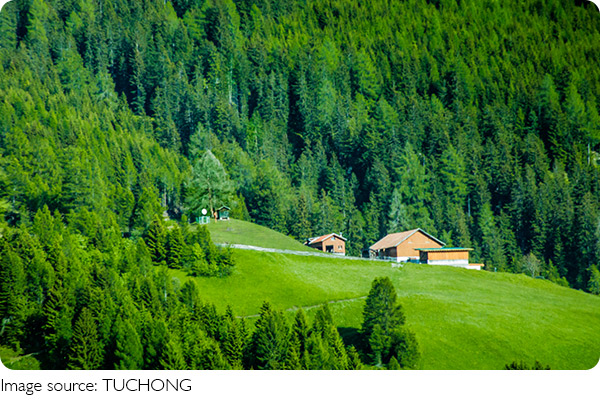Plant Resilience

If you've ever watched a garden bloom in spring only to wither under the intense summer heat, you've seen firsthand the challenges plants face as climate change continues to disrupt weather patterns.
Rising temperatures, unpredictable rainfall, and extreme weather events are testing the limits of plant life around the world. But there's hope. With the right strategies, plants can be made more resilient to these shifting conditions. Here's a closer look at how we can help plants adapt to the new climate reality.
Understanding the Climate Challenge for Plants
Before jumping into solutions, it's essential to grasp the depth of the challenge. Plants depend on a delicate balance of temperature, water, and light to thrive. However, as global temperatures rise, weather patterns become less predictable, and extreme events like droughts, storms, and floods become more frequent, plants are pushed to their limits.
This unpredictability often results in stress—whether it's too little water or too much heat—that affects plant health, growth, and productivity. Plants that once thrived in specific conditions may find themselves struggling, with their traditional growing seasons shortened or altered. So, how can we bolster their resilience?

1. Planting Drought-Resistant Species
One of the most straightforward strategies for improving plant resilience is to opt for drought-resistant plants. These species have evolved to survive with minimal water, making them better suited for areas experiencing increasing dryness due to climate change.
• Native plants: Many native plants are adapted to the local climate and are often better at surviving droughts or other extreme conditions than non-native species.
• Xerophytes: These are plants specifically designed to thrive in arid conditions. Cacti, succulents, and drought-tolerant grasses are examples that not only survive but flourish in dry conditions.
Planting these species can help conserve water, reduce the need for irrigation, and improve the overall health of the ecosystem.
2. Using Water-Saving Techniques
While drought-resistant plants are essential, they don't completely solve the issue of water scarcity. Another crucial strategy is implementing water-saving practices in gardening and agriculture. By reducing water waste, we can help plants thrive even in increasingly dry environments.
• Drip irrigation: This method delivers water directly to the plant roots, minimizing evaporation and runoff. It's an efficient way to ensure plants receive the water they need without wasting resources.
• Rainwater harvesting: Collecting and storing rainwater can be a sustainable way to water plants, especially in areas that experience intermittent rainfall. This method helps reduce reliance on municipal water systems.
• Mulching: Applying mulch around plants helps retain soil moisture, reduces evaporation, and keeps the roots cool during hot periods.
These techniques ensure that even during dry spells, plants have access to the water they need to thrive.
3. Improving Soil Health for Better Plant Growth
Healthy soil is the foundation for resilient plants. When soil is rich in organic matter, it retains moisture better and provides plants with the nutrients they need to grow strong. Soil that's in poor condition, on the other hand, is more prone to erosion and less able to hold water, leaving plants vulnerable to the harsh effects of climate change.
• Composting: Adding compost to the soil boosts its organic content, improving moisture retention and soil structure. This helps plants grow more robust and better able to withstand climate stress.
• Cover crops: Growing cover crops such as clover or beans can help prevent soil erosion, improve soil fertility, and increase water retention. They also act as a protective layer against extreme heat.
• Soil aeration: Ensuring that soil has enough air circulation helps plant roots breathe, improving their ability to absorb water and nutrients.
With healthy soil, plants are better equipped to handle the stresses of a changing climate.

4. Breeding and Genetic Modification for Resilience
In addition to natural strategies, breeding and genetic engineering offer powerful tools for creating climate-resilient plants. Advances in plant breeding have led to the development of crops that can withstand extreme temperatures, resist pests, and grow in poorer soils.
• Genetic modification: Scientists are working on modifying plants to tolerate extreme weather conditions, such as heat and drought. These genetically modified crops can potentially boost food security by making plants more adaptable to changing climates.
• Hybrid plants: Hybridization combines the best traits of different plant varieties, creating resilient strains that can handle environmental stress more effectively. These hybrids might be more resistant to diseases or pests while requiring fewer resources.
While controversial, genetic modification and hybridization offer promising solutions for ensuring plant health in the face of climate change.
5. Restoring Ecosystems and Protecting Habitats
Beyond individual plant resilience, it's essential to consider ecosystem-wide strategies. Restoring natural habitats and protecting plant biodiversity can help ecosystems adapt to climate change more effectively. Diverse ecosystems are more resilient because different species can thrive under different conditions, allowing the system as a whole to endure changing climates.
• Habitat restoration: Reforestation, wetland restoration, and the creation of green urban spaces can help protect and regenerate ecosystems that might otherwise be damaged by climate change.
• Protected areas: Establishing and maintaining protected areas allows plants to grow in their natural environment, free from human interference. These areas can serve as refuges for species threatened by climate change.
By focusing on ecosystem health, we provide plants with a supportive environment to adapt and survive.

Looking Forward: A Balanced Approach to Plant Resilience
As climate change continues to unfold, the need to improve plant resilience becomes increasingly urgent. Whether through selecting the right plant species, improving water efficiency, enhancing soil health, or investing in genetic research, there are a variety of ways to help plants cope with a changing climate.
However, it's important to remember that no single strategy will work in isolation. A combination of approaches, tailored to local conditions, is the key to building resilience. Just as plants need diverse conditions to thrive, we too must adopt a multifaceted approach to ensure a future where plant life can continue to flourish despite the challenges of climate change.

